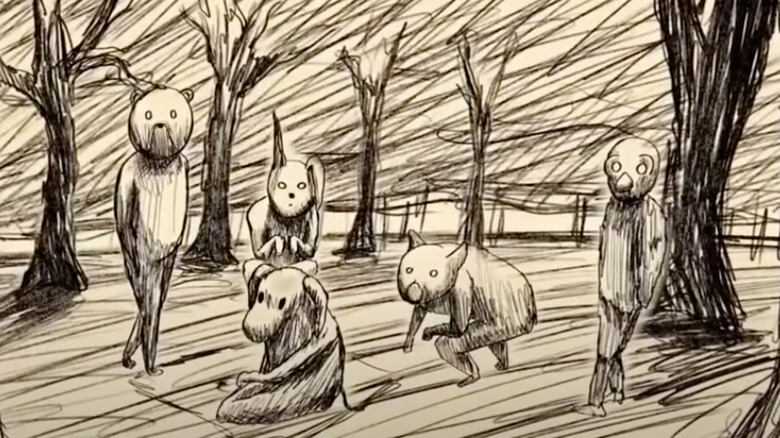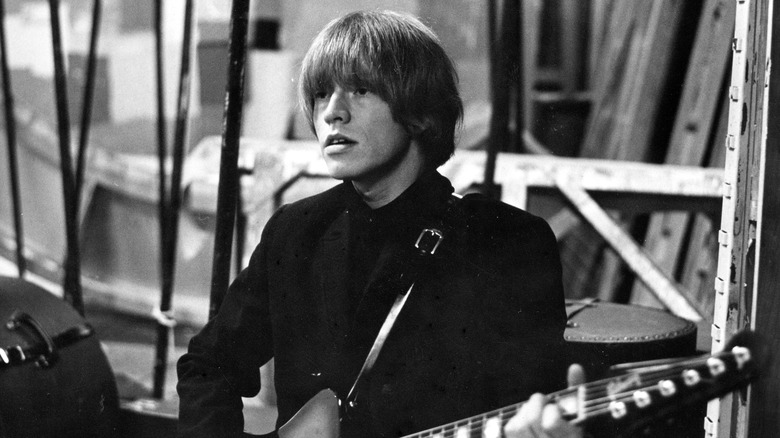Was Winnie The Pooh: Blood And Honey Filmed In The Real Life Hundred Acre Wood?
The surprise independent horror film "Winnie the Pooh: Blood and Honey" took audiences by surprise when it brought the beloved characters created by A. A. Milne and E. H. Shepard into a terrifying slasher film. But it appears the Rhys Frake-Waterfield-directed chilling adaptation of the cherished source material didn't take the honey-loving yellow bear and his puny porker pal very far from the Hundred Acre Wood after all.
Five months after the 1926 take on the Winnie the Pooh crew went into the public domain, a report from Variety confirmed that the film had completed its ten-day production and verified that "Blood and Honey" was actually shot not far from a place known as Ashdown Forest. While that particular area may not contain talking animals that wear clothes, it did serve as the inspiration for the Hundred Acre Wood from Milne's tales. Thanks to the wildly creative efforts of Pooh's creator and the mind behind "Blood and Honey," the infamous location is now the site of numerous precious memories and some most disturbing moments.
From being a place of inspiration for a treasured children's tale to the site of a low-budget horror success story, there is no denying Ashdown Forest certainly has quite an intriguing history. But not every fantasy-like forest has a happy ending, and it might astonish some to discover that another Pooh-inspiring area isn't a stranger to real-life tragedy.
The music industry suffered a painful loss at Cochford Farm
While Ashdown Forest may have been the place that helped A. A. Milne cultivate the imaginary world of the Hundred Acre Wood and later be the shooting location for "Blood and Honey," another establishment with ties to the Winnie the Pooh creator's past has also made headlines. Cotchford Farm, which isn't very far from Ashdown Forest, was once the place of residence for the renowned writer responsible for the well-regarded children's stories, but decades after he occupied the area, the founder of the iconic Rock n' Roll group the Rolling Stones, Brian Jones, was its owner.
The band's guitarist purchased the property in November 1968, before he was asked to leave the Rolling Stones in June 1969 and replaced by Mick Taylor. In July 1969, Jones was found unresponsive in his swimming pool at Cotchford Farm and declared dead when authorities arrived on the scene. His passing was ruled "death by misadventure," but several theories surrounding a possible murder scenario have popped up over the years, including a 1994 book from Terry Rawlings titled "Who Killed Christopher Robin? The Truth Behind the Death of a Rolling Stone" While there has been plenty of speculation regarding foul play, nothing concrete has ever been found to warrant any changes in the case regarding his demise.
Between the tragic loss of Brian Jones at Cotchford Park and the shooting of the slasher "Winnie the Pooh: Blood and Honey" in Ashdown Forest, it feels safe to assume there is a surprising amount of death associated with the Hundred Acre Wood, probably more than anyone would like to imagine.

